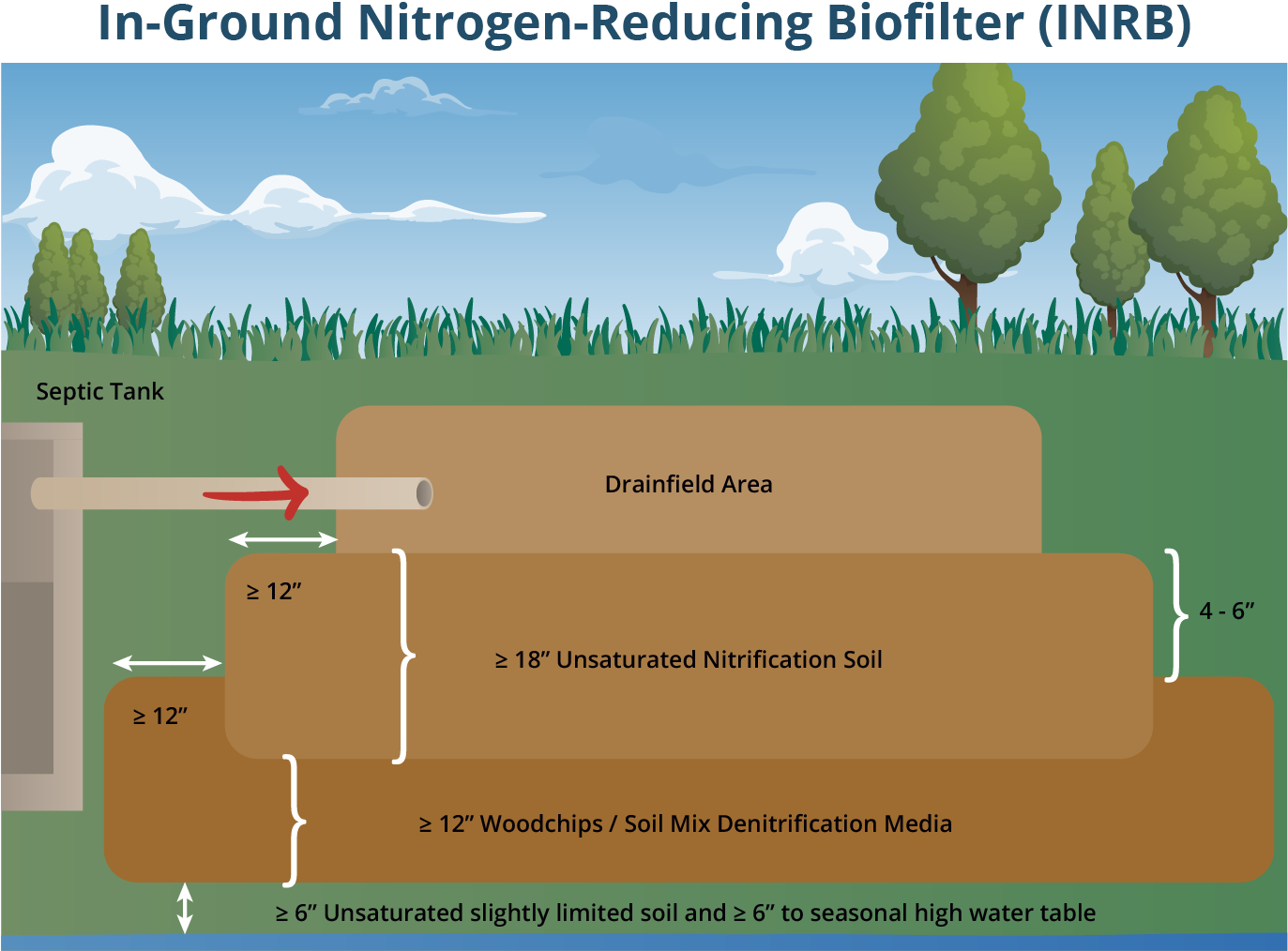
Reducing the Impact of Septic Systems Through Advanced Nitrogen Treatment

Many of Florida’s historic first magnitude springs are classified as nitrogen impaired. Image credit: UF/IFAS Communications
Septic systems are an effective means of treating wastewater when they are properly designed, constructed and maintained. Conventional systems are designed from a public health perspective and have been widely used since the 1940s to remove pathogens and protect human health. About 30% of Florida’s population relies on septic systems, which treat and dispose household wastewater drained from bathrooms, kitchens and laundry machines.
However, septic systems were not designed to remove nutrients. A conventional system removes only about 30 percent of the nitrogen that flows into it. Even a well-maintained system will become a source of nitrogen (particularly nitrate-nitrogen) to the surrounding soil in the drainfield, and may leach to groundwater. Excess nitrogen in Florida’s waterbodies can be a contributing factor to ecological community degradation and increases in algae.
What alternatives are there to conventional septic systems?
Many enhanced nitrogen removal technologies exist, but only those approved by the Florida Department of Health (FDOH) can be installed. Conventional septic systems are made up of a septic tank and a drainfield (or leachfield). Advanced treatment systems add steps to conventional system processes to improve contaminant removal. Types of advanced nitrogen removal technologies available include:
- Aerobic Treatment Units ATUs are made of fiberglass, polyurethane or concrete. Unlike conventional systems, ATUs introduce air into the sewage in the tank using a pump. By aerating waste, the organic matter in the tank is broken down faster than in a conventional system. Effluent from an ATU is discharged into a drainfield for further treatment in the soil, just as with a conventional septic system. ATUs require higher energy input than conventional septic systems to power the aerator, and regular operation and maintenance to sustain performance ATU example from the US EPA
- Performance Based Treatment Systems PBTS are specialized systems designed by professional engineers to meet specific levels of contaminant removal based on site and/or situation requirements. There are many proprietary commercial options available. Designs often include an ATU. Like ATUs, PBTS require higher energy input than conventional septic systems to power pumps, and regular maintenance is needed to sustain performance.
- In-Ground Nitrogen Removing Biofilters INRB are also referred to as modified drainfields. These systems are passive, which means they require no electric aerators or pumps to treat wastewater, and maintenance requirements are lower than those for ATUs and PBTS. INRBs are nitrogen-reducing media layers placed underneath a conventional drainfield.

Ammonium-nitrogen in wastewater leaving the septic tank moves down through the Drainfield Area soil and an additional oxygen-rich zone (Unsaturated Nitrification Soil) to promote conversion into nitrate-nitrogen. Wastewater then passes through a low-oxygen, carbon-rich zone to promote denitrification (Woodchips/Soil Mix Denitrification Media). Denitrification is a process by which specialized bacteria convert nitrate into nitrogen gas that escapes into the atmosphere. This reduces the amount of nitrogen that can leach into groundwater.
FDOH provides comprehensive information about advanced treatment systems and requirements on their product listing and approval requirement web page.
Where are advanced treatment systems required?
The short answer is wherever a septic system remediation plan to protect Florida Springs has been put into place. The 2016 Florida Springs and Aquifer Protection Act was passed to protect 30 ‘Outstanding Florida Springs.’ The majority are historic first magnitude springs, springs with flows of more than 100 cubic ft/second. Twenty-four of these springs are identified as nitrogen impaired by the Florida Department of Environmental Protection.
If septic systems contribute more than 20% of the nitrogen load to the impaired spring, a remediation plan takes effect in specific areas (Priority Focus Areas) that are particularly susceptible to nitrogen pollution. Septic system remediation plans require new development to connect to central sewer where available. If this isn’t an option, new construction on lots of less than 1 acre must include advanced nitrogen-removal technology. In the Panhandle, areas around Wakulla Springs and Jackson Blue Springs have remediation plans.
The best source of information about specific remediation plans and whether or not you live in a Priority Focus Area is FDOH. Contact your local County Department of Health Office to find out if you live in a PFA or if you have questions about septic tank requirements, permitting and approved advanced nitrogen-treatment features for septic systems.
For more information and resources about conventional septic systems and advanced treatment system visit our UF/IFAS Septic Systems website.
